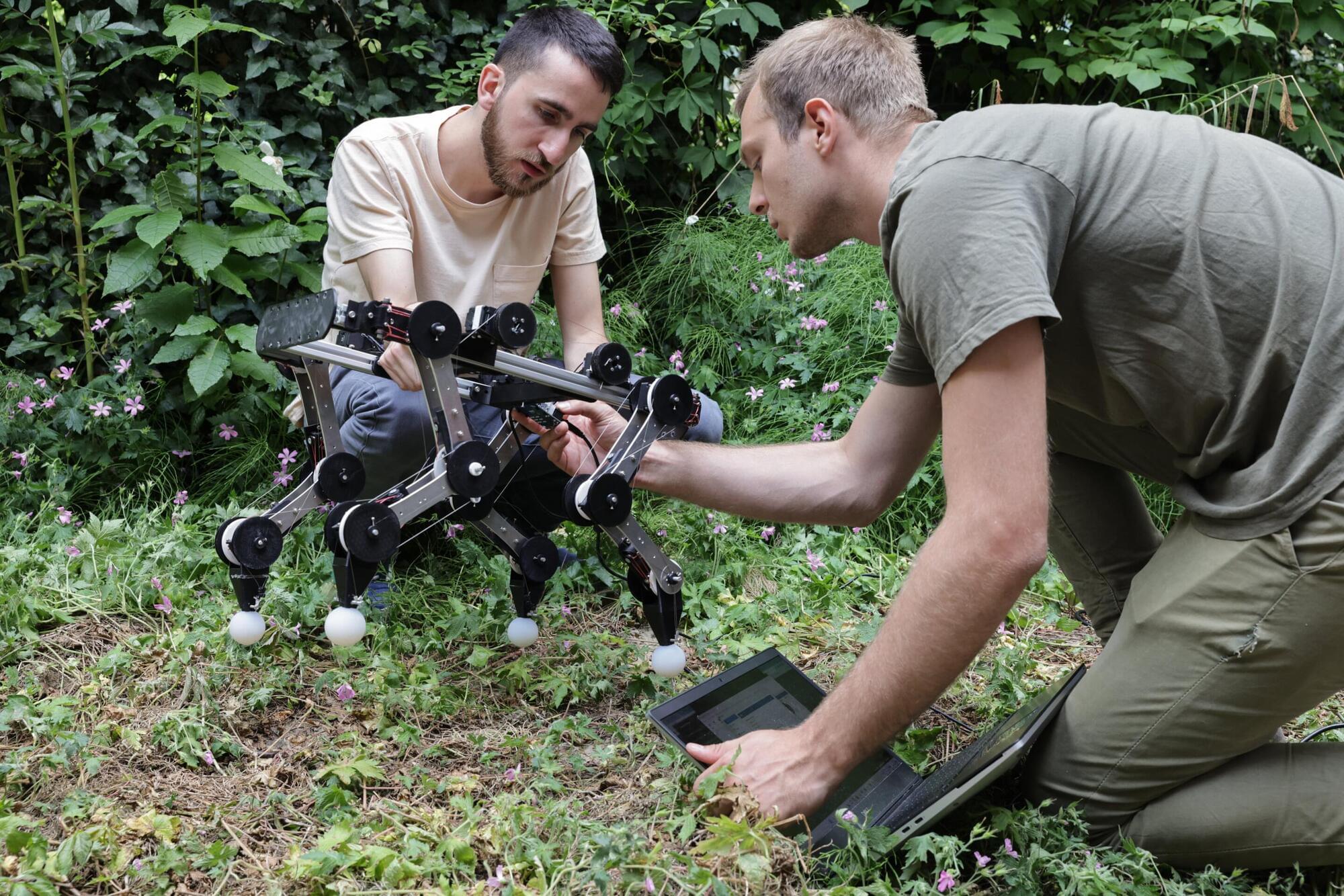Many of the robotic systems developed in the past decades are inspired by four-legged (i.e., quadruped) animals, such as dogs, cheetahs and horses. By replicating the agile movements of these animals, quadruped robots could move swiftly on the ground, crossing long distances on various terrains and rapidly completing missions.
Yet realistically and robustly replicating the fluid motions observed in animals using robotic systems can be very challenging. While some existing four-legged robots were found to be very agile and responsive to changes in their environment, these systems typically integrate advanced actuators and computational components that consume a lot of energy.
Researchers at EPFL’s CREATE Lab and Delft University of Technology (TU Delft) recently developed a new four-legged robot called PAWS (Passive Automata With Synergies), which could reproduce the fluid and adaptive movements of animals using fewer actuators. This robot, introduced in a paper in Nature Machine Intelligence, leverages so-called motor synergies, which are coordinated patterns of muscle activation that allow animals to perform agile motions consuming less energy.
